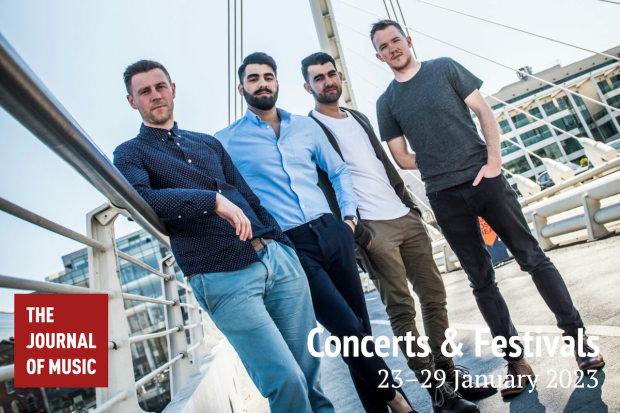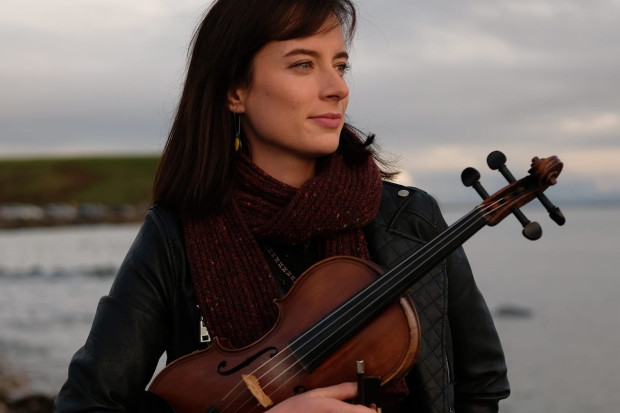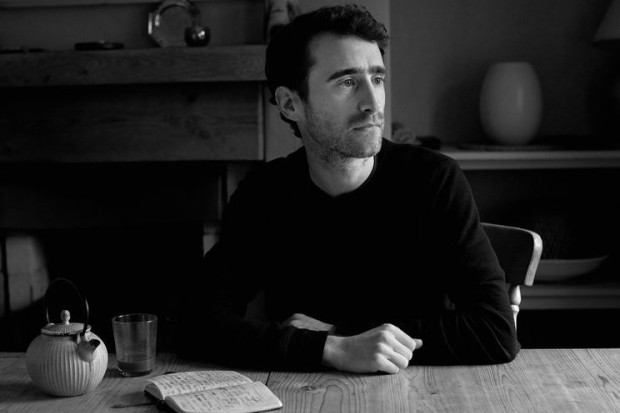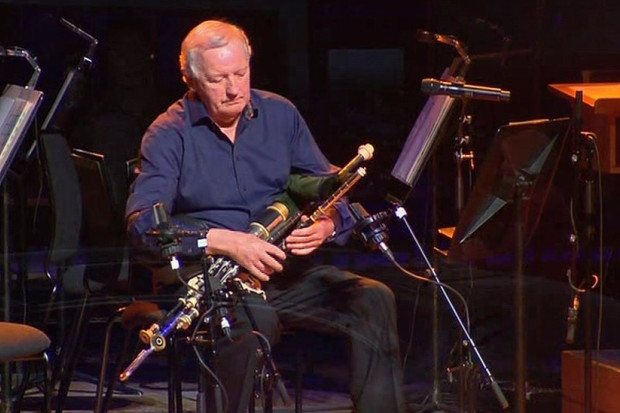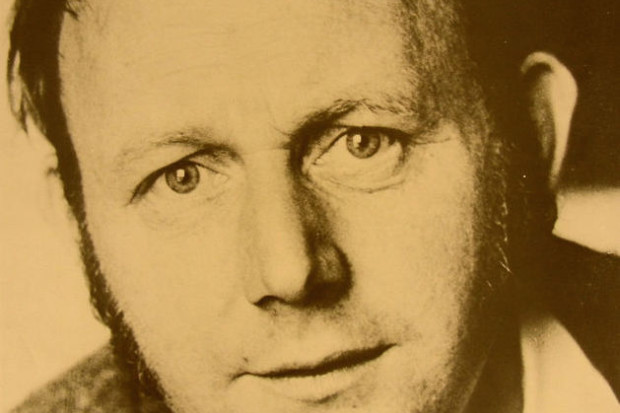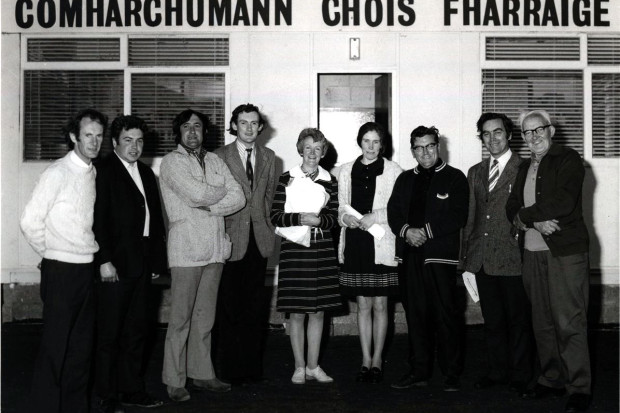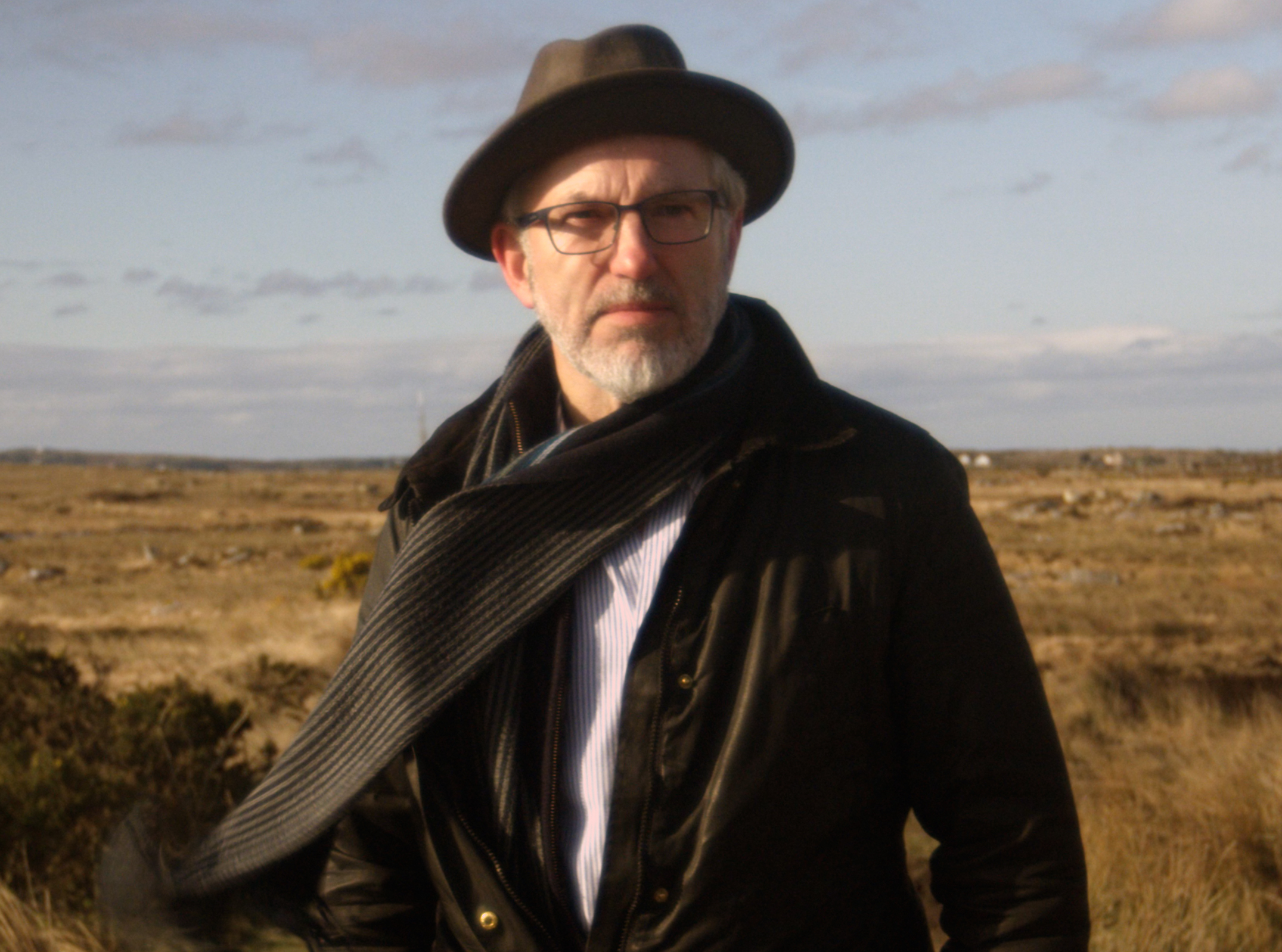
Noel Hill
From Broken Dream to Musical Healing
This is a stark and unflinching film of a life in music, its rupturing, and the process of reparation. Its subject is the Clare concertina player Noel Hill, and it is partly biographical, and partly a reflection on the aftermath of the traumatic assault he suffered in 2008. Directed by Paddy Hayes, and produced by concertina player Edel Fox (herself a former student of Hill), it avoids a narrator to allow Hill’s own words to come to the fore, with additional contributions from a range of others, most poignantly from his daughter, Aisling. There are tremendous performances within the film, featuring a number of other musicians alongside Hill including Jack Talty and Frankie Gavin.
As the film’s title suggests, this is a lament for a broken dream (‘aisling ghéar’ – sour dream), for how Hill’s aspirational vision of contributing to the Irish language and culture turned bitter. And even though Hill was already immersed in Irish culture through his music and upbringing, and was obviously immensely serious about the importance of cultural heritage, he describes his own tragic version of this journey to the Connemara Gaeltacht as ‘a mistake’.
It is the beauty of the ‘paradise’ of Connemara, as Hill describes it in the opening scene, that the film first focusses on. This is first strikingly set against the singing of Maria Callas, a soprano whose art was also bound up with tragedy, and who Hill greatly admires and identifies with for her ability to soar beyond tragedy, her control over her sound, and for instilling such heart in her music. A second scene of Hill playing the Willie Clancy air ‘The Bold Trainer-O’ against the sweeping landscape around his house is disrupted by Hill’s harrowing description of the attack on him.
Musical voices
The film then takes us through Hill’s life as a musician, which began with him covertly learning tunes on his brother’s concertina. He was greatly inspired by his uncle Paddy’s concertina playing, and Hill recalls that he ‘really opened my ears to great music’. Paddy visited regularly and played at house dances in the Hill homestead, which had yet to benefit from the rural electrification scheme. This rootedness in a rural, almost pre-modern tradition is obviously deeply meaningful to Hill; at the same time, he also benefited from his uncle’s reel-to-reel recordings, particularly those of the piper Willie Clancy.
The music of Clancy in particular underlies Hill’s indebtedness to the uilleann pipes, and his regret at not having had the chance to learn it. Reflecting on this background, he eloquently describes how in one sense he considers his playing as connecting or conversing with the musical voices of his past, a point also made in the film by accordion player Tony MacMahon. Oddly enough this sequence finishes with a fine performance of ‘Lord Gordon’s Reel’ (with Jack Talty on piano), suggesting another influence from the fiddle tradition, and showing the continuing and often unspoken influence of Michael Coleman on Irish traditional music.
Noel Hill and Tony MacMahon at the premiere of Aisling Ghéar at the Irish Film Institute.
Although Hill downplays the idea of a revival as a creation of the media, the film identifies him as responsible for changing our perceptions of the concertina. Hill did this through the evergreen recordings of the late seventies, especially his duet recording with Tony Linnane, surely one of the most canonical albums of Irish music. Hill also expresses in the film a deep sense of responsibility to the passing on of the music, and his love for ‘the noble art of teaching’. In this portion there are fascinating insights into his thoughts on the importance of technique to performance, and how the creation of a personal soundworld is utterly dependent upon this base.
Restorative power
The final third of the film moves back towards the personal, on the impact the attack had on Hill and his family, and on how it affected his life in the area. This is bleak material, raising tough questions about community, justice and identity, and returns to the opening idea of Connemara as a potential utopia now irreconcilable to Hill. But the film also contains a more hopeful dimension to this, as it shows the remarkable restorative power that music has had in effecting a redemption, both for his family as touchingly described by Aisling Hill, and for Noel Hill himself. Her testimony that ‘music has the power to heal’, and that it took him to another place – ‘he was no longer in Connemara’ – suggests the extent to which the place itself had come to stand for the tragedy.
The closing air, ‘Marbhna Luimní’, played with organist Raymond O’Donnell in the magnificent surroundings of Galway Cathedral, is the backdrop to a closing credo; that the practice of music in itself is a prayer, an offering; an expression of our humanity; and allows the burden of life to be lifted. It’s a powerful closing to a powerful and thoughtful film, and great credit is due to the filmmakers for handling the subject matter so sensitively, and for producing such a compelling film.
Aisling Ghéar will be broadcast on TG4 on Wednesday 18 April at 9.30pm.
–
Published on 21 March 2018
Adrian Scahill is a lecturer in traditional music at Maynooth University.













